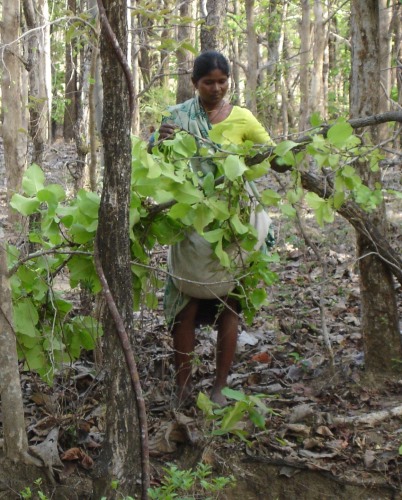|
Carapa Procera
''Carapa procera'', called African crabwood, is a species of tree in the genus ''Carapa'', native to the West African tropics and to the Amazon rainforest, and introduced to Vietnam. Some authorities have split off the South American population into its own species, '' Carapa surinamensis''. The nuts are intensively collected in the wild for their oil, a non-timber forest product. In tropical Africa, the species is increasingly threatened. References {{Taxonbar, from=Q2937877 procera Procera is a hypothetical clade of amphibians that includes salamanders and caecilians but not frogs. A close relationship between salamanders and caecilians is a competing hypothesis to the more widely supported view that salamanders and frogs a ... Non-timber forest products Plants described in 1824 ... [...More Info...] [...Related Items...] OR: [Wikipedia] [Google] [Baidu] |
Carapa
''Carapa'' is a genus of flowering plants in the mahogany family, Meliaceae. These are trees up to 30 meters tall occurring in tropical South America, Central America,Hogan, C. M. 2008Isthmian-Atlantic moist forests.Encyclopedia of Earth, World Wildlife Fund, National Council of Science and the Environment. and Africa. Common names include andiroba and crabwood. Diversity The list of species within this genus is still under discussion. Generally recognized species are: *''Carapa guianensis'' (andiroba, crabwood): Amazon Region, Central America, Caribbean *''Carapa megistocarpa'' (tangare): Ecuador *''Carapa procera'' (African crabwood, kowi, okoto): West Africa, the Congos Other proposed species: *''Carapa akuri'' *''Carapa alticola'' *''Carapa longipetala'' *''Carapa nicaraguensis'' *''Carapa vasquezii'' Uses The timber is important, and oil is produced from the seeds. The name andiroba is from Nheengatu ''nhandi rob'', meaning "bitter oil". ''Carapa guianensis'' produces oil ... [...More Info...] [...Related Items...] OR: [Wikipedia] [Google] [Baidu] |
Carapa Surinamensis
''Carapa'' is a genus of flowering plants in the mahogany family, Meliaceae. These are trees up to 30 meters tall occurring in tropical South America, Central America,Hogan, C. M. 2008Isthmian-Atlantic moist forests.Encyclopedia of Earth, World Wildlife Fund, National Council of Science and the Environment. and Africa. Common names include andiroba and crabwood. Diversity The list of species within this genus is still under discussion. Generally recognized species are: *'' Carapa guianensis'' (andiroba, crabwood): Amazon Region, Central America, Caribbean *''Carapa megistocarpa'' (tangare): Ecuador *''Carapa procera'' (African crabwood, kowi, okoto): West Africa, the Congos Other proposed species: *'' Carapa akuri'' *'' Carapa alticola'' *'' Carapa longipetala'' *'' Carapa nicaraguensis'' *'' Carapa vasquezii'' Uses The timber is important, and oil is produced from the seeds. The name andiroba is from Nheengatu ''nhandi rob'', meaning "bitter oil". ''Carapa guianensis'' produc ... [...More Info...] [...Related Items...] OR: [Wikipedia] [Google] [Baidu] |
Non-timber Forest Product
Non-timber forest products (NTFPs) are useful foods, substances, materials and/or commodities obtained from forests other than timber. Harvest ranges from wild collection to farming. They typically include game animals, fur-bearers, nuts, seeds, berries, mushrooms, oils, sap, foliage, pollarding, medicinal plants, peat, mast, fuelwood, fish, insects, spices, and forage. Overlapping concepts include non-wood forest products (NWFPs), wild forest products, minor forest produce, special, minor, alternative and secondary forest products – for further distinctions see the definition section below Research on NTFPs has focused on their ability to be produced as commodities for rural incomes and markets, as an expression of traditional knowledge or as a livelihood option for rural household needs, as a key component of sustainable forest management and conservation strategies, and for their important role in improving dietary diversity and providing nutritious food, particularly f ... [...More Info...] [...Related Items...] OR: [Wikipedia] [Google] [Baidu] |
Non-timber Forest Products
Non-timber forest products (NTFPs) are useful foods, substances, materials and/or commodities obtained from forests other than timber. Harvest ranges from wild collection to farming. They typically include game animals, fur-bearers, nuts, seeds, berries, mushrooms, oils, sap, foliage, pollarding, medicinal plants, peat, mast, fuelwood, fish, insects, spices, and forage. Overlapping concepts include non-wood forest products (NWFPs), wild forest products, minor forest produce, special, minor, alternative and secondary forest products – for further distinctions see the definition section below Research on NTFPs has focused on their ability to be produced as commodities for rural incomes and markets, as an expression of traditional knowledge or as a livelihood option for rural household needs, as a key component of sustainable forest management and conservation strategies, and for their important role in improving dietary diversity and providing nutritious food, particularly for ... [...More Info...] [...Related Items...] OR: [Wikipedia] [Google] [Baidu] |


